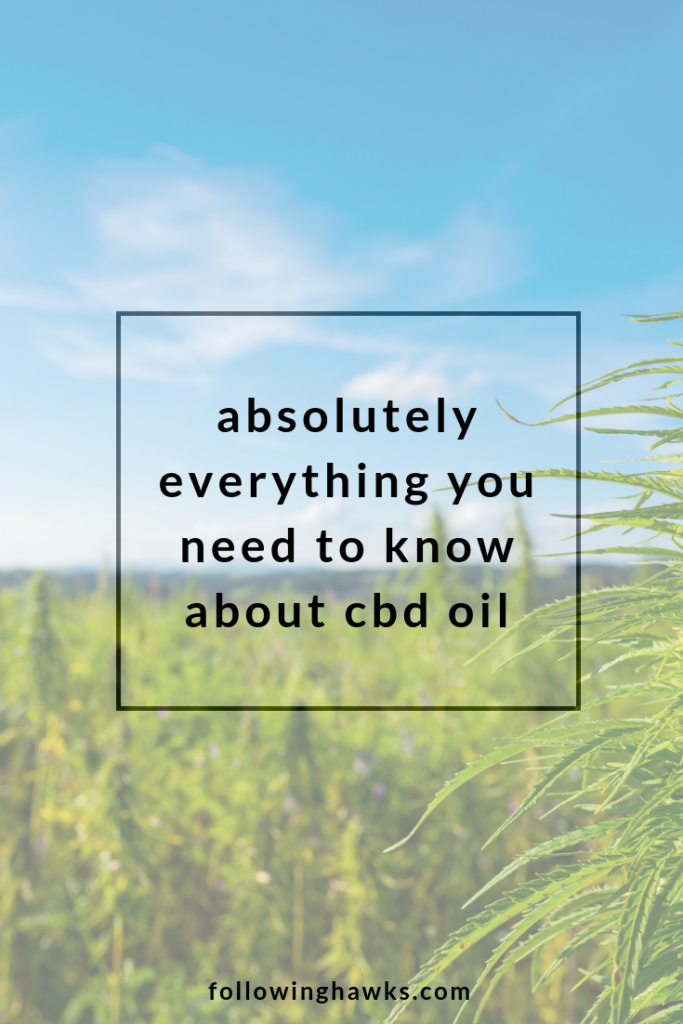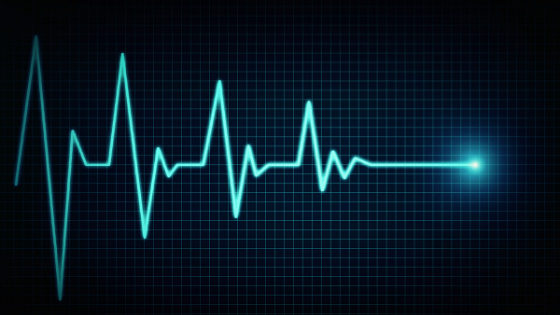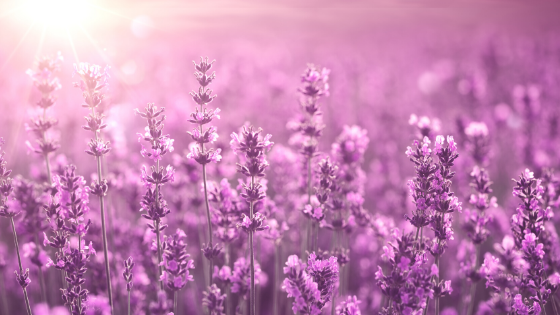This post is a little different than my usual blog posts. But it's a topic that I've noticed has come up again and again with my friends and family. It's the latest rite of passage for what ails our aging bodies. Just as I can guess that some cute boy passed you a joint under the bleachers during a high school football game in your youth, someone you know has probably told you in the last year or so that you need to try CBD oil. All the cool kids are doing it, they say.
Except now you’re an adult and you don’t have to hear your mom’s voice in your head saying….if all the cool kids jumped off a bridge, would you do it too?? I mean, you might still hear her voice in your head, but let’s be honest, it’s more likely that it was your mom that told you that you totally need to try CBD. One of her friends gave some to her and she’s totally, probably, definitely sure that it doesn’t get her high.
But if you’re looking to support healthy muscle function, get more restful sleep, relief from nausea or help with balancing your emotions, I’m willing to bet that CBD oil is on your radar.
So what’s the deal with CBD oil?
There are two primary compounds that come from the cannabis plant (also known as hemp): Tetrahydrocannabinol (THC) and cannabidiol (CBD). They have the exact same chemical formula, with slightly different structures, which means they behave differently in our bodies.
Both are cannabinoids that interact with the receptor sites in our brain, however THC is psychoactive and causes the sensation of getting “high”, while CBD does not. This means you get the therapeutic benefit of the plant without feeling the need to lay on the couch eating Cheetos all afternoon. As a bonus, it won’t show up on a drug test any more than another plant oil would.
And that’s exactly what CBD is – an oil extracted from the cannabis (or hemp) plant.
The whole hemp vs. marijuana thing is kind of confusing and ultimately comes down to plant science and federal law (I actually majored in plant science in college and this is still hard to wrap my brain around). But here’s the simple explanation: the plant cannabis sativa can be classified as either hemp or cannabis. If the plant contains more than 0.3% THC, it’s considered cannabis (or more commonly marijuana or weed) and if it contains less than 0.3% THC, then it’s hemp.
Yeah, totally not confusing at all.
Plant scientists have purposely bred THC out of the plants so that they can produce CBD oil. CBD potency can vary from plant to plant so some producers have even developed proprietary strains of hemp to produce their specialized products.
So how does it go from plant to oil?
The entire hemp plant is soaked in a solvent, like grain alcohol. After soaking, the liquid contains both the CBD and other cannabinoids present in the plant. Then, the solvent is evaporated leaving behind the CBD hemp oil.
Alternatively, CBD can be extracted by CO2 where ultra-pure liquid carbon dioxide is used to extract the oil. By compressing carbon dioxide gas, it becomes a liquid that performs just like water when it’s under pressure. When the pressure is released, the CO2 turns back into gas and evaporates, leaving only the pure oil.
Just like any other kind of essential oil on the market, quality varies widely from brand to brand. Because CBD is produced without regulation, there are no requirements for labeling. Neurotoxic solvents like butane and hexane may be used for extraction rather than CO2 or grain alcohol and could leave unsafe residues behind in the oil that could compromise your immune function or impede healing, the exact opposite of your intentions for using CBD.
And no surprise, there are companies who now manufacture synthetic cannabinoids and label them as CBD, creating further confusion. In fact, when 52 people were sickened by CBD in Utah late last year, it was determined that it was from a synthetic product falsely labeled.
So, buyer beware when it comes to CBD oil.
You could get a watered down sub-par product or you could end up buying something that could endanger your health. Be sure you know how the plants were grown, what extraction process and solvents were used and if any other ingredients were added at any point in the process.
But, is it really legal?
The short answer is, kind of. Hemp-derived CBD has been legalized by every individual state except for Idaho, Nebraska and South Dakota. The 2018 Farm Bill also legalized hemp at the federal level, but at the moment, the FDA says that it can’t be added to foods or dietary supplements.
The longer answer is that different federal agencies are still working out what is allowed with CBD when it comes to interstate commerce, making health claims or adding it to food or supplements. This is why you haven’t seen any really large companies whose names you’re familiar with wade into the CBD market yet – they’ve got too much to lose if they find themselves in a gray area with the Food & Drug Administration.
However, the FDA has said that they will allow CBD sales for companies that go through their approval process, which means that as large companies begin to jump through the regulatory hoops to become an approved seller, you’ll start seeing better quality products more widely available. At the moment, we see smaller companies making and selling CBD in their individual states, operating under state laws and hoping to stay off the FDA’s radar.
Okay, now that we have all of the science and legal concerns out of the way, what would you want to use CBD for anyway?
Well, speaking of the FDA, one thing they are cracking down on is companies who are making unproven health claims about what CBD can do for you. So, do your own research – since it was an illegal substance for so many years (whether it included THC or not), there just hasn’t been much in the way of scientific studies thus far. The FDA has recently approved a drug including CBD for the treatment of seizures for two rare forms of epilepsy so it seems that the studies are underway and are promising.
On a broad level, many people are using CBD to support healthy muscle function, get more restful sleep, relief from nausea, help with balancing emotions or soothing occasional stress or nervous tension.
What’s amazing to me is that our bodies have a system called the endocannabinoid system that helps to regulate a variety of critical functions like pain sensation, sleep, appetite, mood and memory.
Our bodies produce endocannabinoids, which are neurotransmitters that bind to cannabinoid receptors in our nervous system. Simply put, they’re molecules that carry chemical signals between nerves. When CBD enters our system, it interacts with those neurotransmitters and impacts the receptor activity.
Consumer Reports did a survey last year of just over 1,000 Americans. 13% said that they had used CBD to help with symptoms related to a health issue and nearly 90% of them said it helped ease their symptoms. So yeah…it’s definitely gaining traction as a natural remedy.
Should we worry about any side effects from using CBD?
There have been many small studies looking into the safety of CBD oil use in adults and thus far have concluded that adults tend to tolerate a wide range of doses well. Researchers have found no significant side effects on the central nervous system, the vital signs, or mood, even among people who used high dosages. The most common side effect was tiredness. Also, some people reported diarrhea and changes in appetite or weight.
Because the product is still so new on the market, there is a lack of long-term studies and at the moment, and no studies have been performed on children.
How do you actually use CBD oil?
There’s a variety of methods to get CBD into your system, and each have their pros and cons.
Vape pens (basically inhaling the vapor from the heated oil) is the fastest way to get it into your system, but it comes with some serious concerns. The cartridges used in vape pens can contain a solvent called propylene glycol, which is also used in e-cigarettes. At high temperatures, propylene glycol can degrade into formaldehyde, a chemical that can irritate your nose and eyes and could increase the risk of asthma and cancer since it’s inhaled into your lungs. This is why some vape pens advertise “solvent-free oils”. But again, there’s that pesky issue of false labeling so it can be difficult to know what’s really in the product you’re buying. Controlling your dosage is also very difficult when you use a vape pen.
The second most effective way to use CBD is with a tincture – either drops or sprays. Drop the oil underneath your tongue and hold it there for about 30 seconds before swallowing or spray it on the inside of your cheek. Both of these methods will increase your body’s absorption of the oil. Depending on how the product is labeled, this method could also be a bit challenging to determine how much of a dose you’re taking at a time so start slow and work up to see what dosage you need to feel its effects.
Topical rubs and balms are very easy ways to apply CBD to targeted parts of your body. Typically, the oil is mixed into coconut oil or beeswax so that you can rub it directly onto your muscles or joints. Topical products do tend to contain a significantly higher amount of CBD to make them effective so this option may be more expensive than some of the others.
And finally, it’s very common to find CBD infused into edibles and pills or supplements. Because these items have to go into your stomach and then be digested before reaching your bloodstream, it’s the slowest way to feel the effects of CBD. Plus, the food that it’s in, combined with any other food you’ve eaten can affect how your body absorbs it. That being said, edible products or pills are more likely to list the actual dosage on the packaging. And if you want to maintain consistent levels of CBD in your body, pills might be your easiest solution.
Where should you buy your CBD oil?
Well, you’ll get a million results on google if you look it up (actually, over 25 million). It’s enough to make your head spin, which is what happened to me when I tried to find a good source. In talking with friends who have purchased it and used it, my suspicions were confirmed. There’s no good way to know for sure what you’re getting, regardless of what different companies claim on their website or product labels.
Based on my super unscientific survey of just asking around, my friends have ordered oils from a variety of sources that either worked exactly as they expected or had no redeeming benefits whatsoever and ended up being a useless waste of money. It’s super frustrating not to know what you’re really getting.
That’s why I was thrilled when Young Living recently announced that they have acquired a CBD supplier that can meet their incredibly stringent Seed to Seal promise.
When a supplier partners with Young Living for any product, they provide a full audit of the source farms including agricultural best practices, harvesting and collecting of the plants and more. They will monitor every step in the process including how the CBD is maintained, stored, manufactured and tested. The CBD oil will be sourced from a farm in Colorado and will be continually vetted to ensure they meet only the highest standards.
Young Living chose to partner with this farm because they perform soil analysis, utilize organic nutrient amendments and do not use any pesticides. They also monitor for pesticide drift from neighboring locations and have an integrated pest management system. They test their water quality, have waste water procedures in place and mitigate for soil erosion. Their manufacturing facility also meets every one of Young Living’s Seed to Seal certification requirements. How amazing is that?!
Want to get started with this safe, high quality CBD?!
Become a Young Living member for as little as $45 and you'll have access to the entire CBD collection at a 15% discount.
Your membership also entitles you to 24% off retail pricing for all Young Living products including over 300 all-natural essential oil-based products including things like laundry detergent, skin care, shampoo and toothpaste. That, along with the entire lineup of CBD products means you’ll literally never need to shop anywhere else again for your clean, green home and beauty products.
You can see how much I believe in this company and their commitment to sourcing the very best products for our health and wellness. Don’t hesitate to reach out if I can answer any of your questions. Or, just get your kit now so you can see how awesome each and every one of their products are for yourself.





